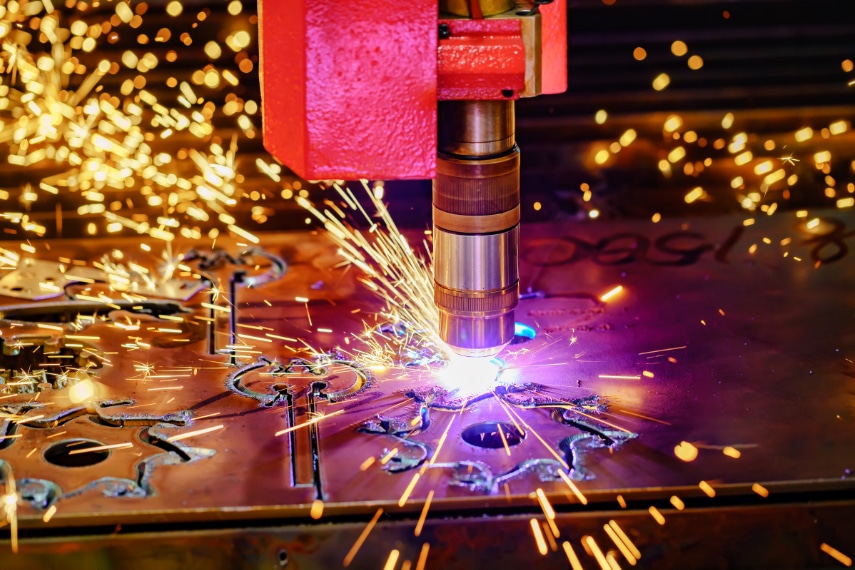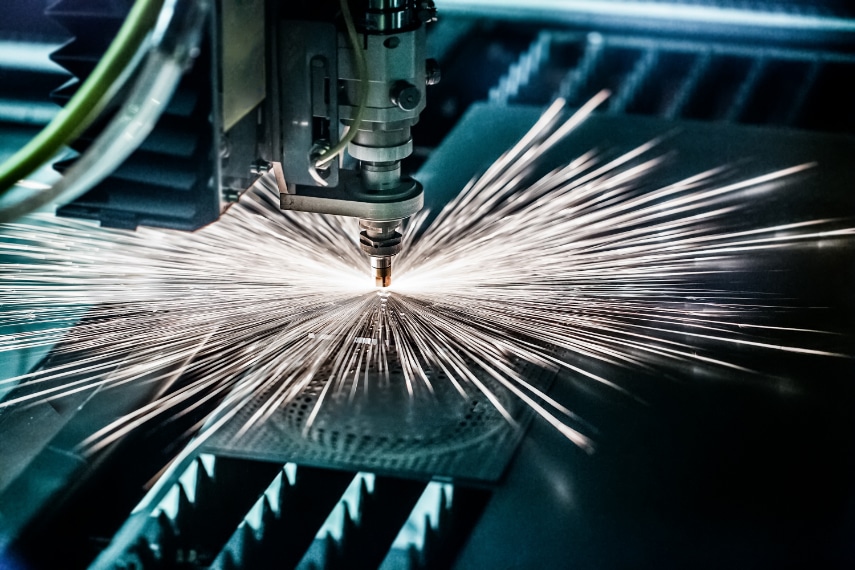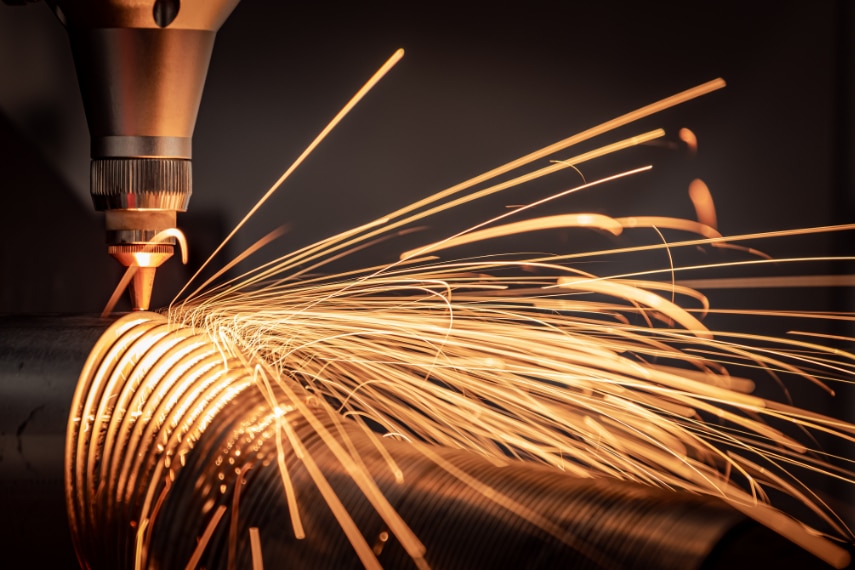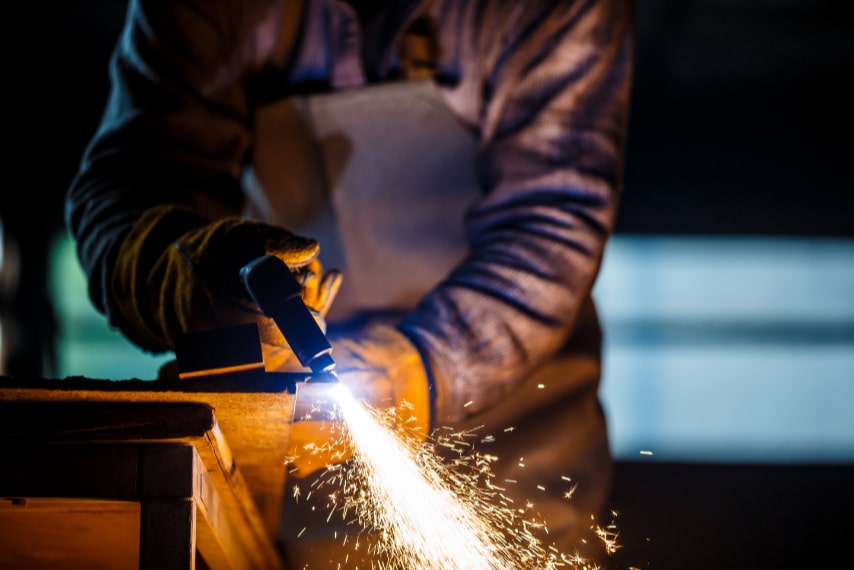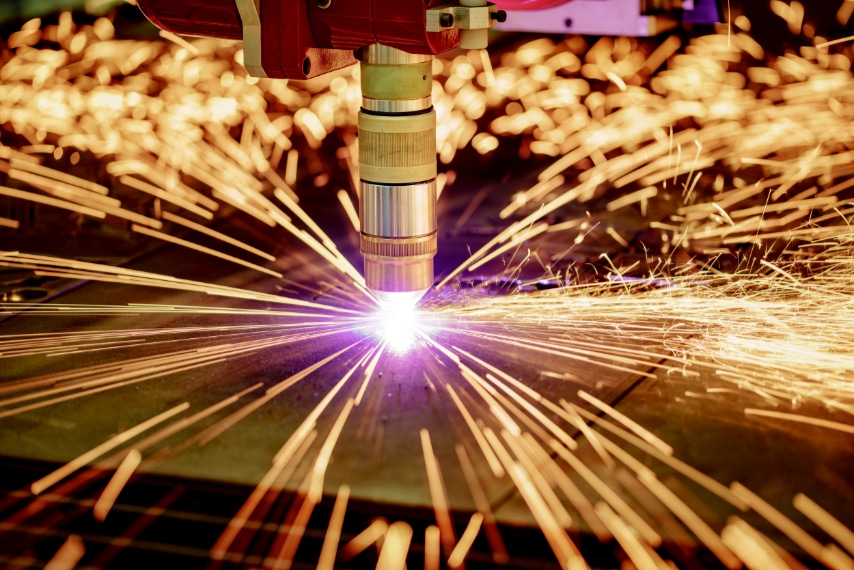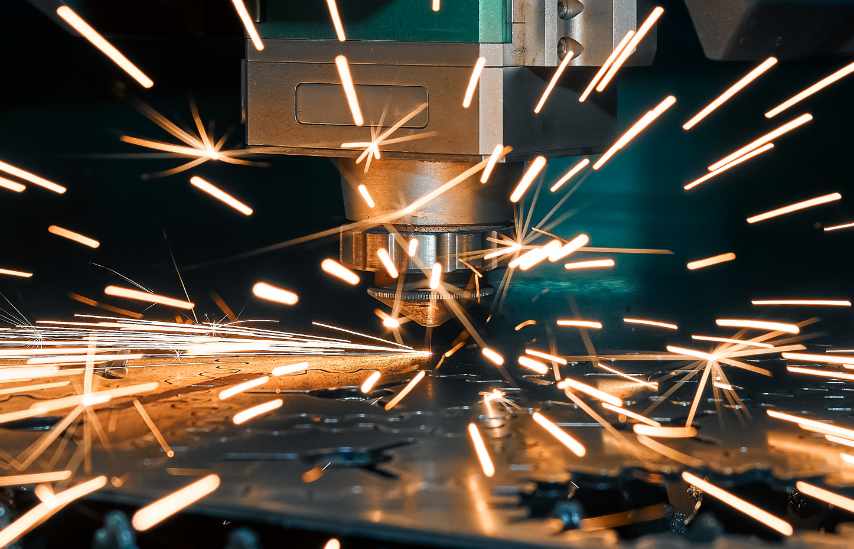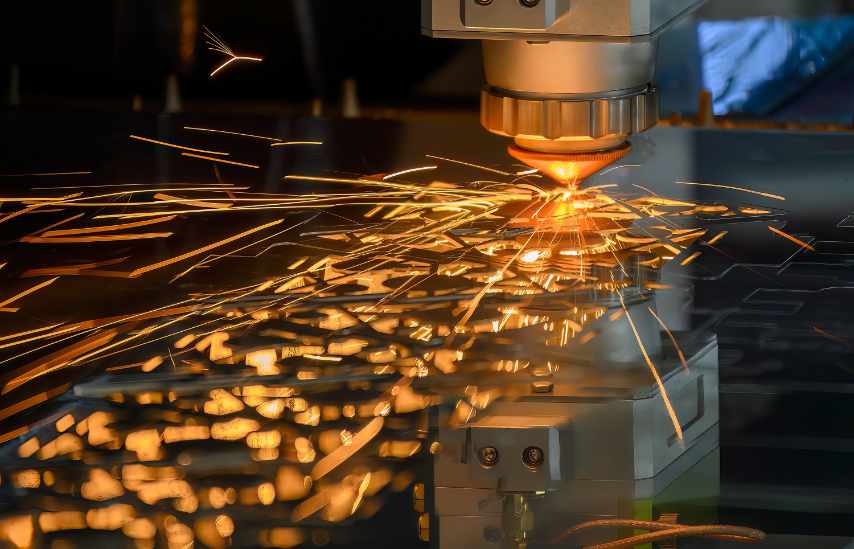When supplying profiles for fabricating two main methods are laser cutting and plasma cutting. Each has its own advantages and drawbacks; in this blog post, we'll compare both techniques so you can decide which is best suited to your fabrication needs!
How Does Laser Cutting Work?
Laser cutting works by directing a powerful laser beam onto the material being cut. As it passes over, it heats up to incredibly high temperatures and evaporates or melts away any material in its path. The speed at which the laser moves determines how precise a pattern can be created--slower speeds work best for intricate designs while faster ones could be used for simpler shapes or larger profiles. Ultimately, what type of laser is being used and what materials need cutting determine the exact process that takes place.
Accuracy, Precision & Consistency
Laser cutting is one of the most accurate and precise fabrication processes available. It also offers great consistency, meaning a cut made on one piece of material can be replicated precisely on another with little variation. Accuracy and precision are achieved by focusing a powerful laser beam onto the material being cut; slower movements produce more intricate designs while faster ones result in basic shapes or larger ones.
Furthermore, laser cutting technology works for a variety of materials such as wood, plastic, and rubber as well as the most common use - metal such as stainless steel or aluminium. By employing laser cutting technology, manufacturers can craft intricate parts with razor-sharp edges and fine details that would otherwise be impossible to create using traditional methods.
Versatility
Laser cutting is a highly versatile process, capable of cutting a wide variety of materials. Metals such as stainless steel, aluminium copper and brass are particularly well suited for this task; for instance, a CO2 laser and a fibre laser can cut through up to 25mm mild steel with ease.
Laser machines are capable of creating a range of shapes, from basic geometric forms like circles and squares to more intricate profiles. The exact shape produced depends on the capabilities of the laser cutter being used but in general, these machines can create virtually any shape imaginable - making them ideal for industrial uses.
Speed
Laser cutting is an incredibly fast fabrication process when compared to other fabrication techniques. A powerful laser beam can quickly and precisely cut intricate patterns, logos, or shapes in the material being worked on. Automated machines ensure fast cutting and accuracy by eliminating manual labour; they're programmed with a design and then left to do all the work - perfect for large projects where speed is paramount.
Fibre & CO2 Laser Technology
Although both fibre and CO2 lasers are highly accurate methods of cutting, they operate in slightly different ways and are readily available as a manufacturing option for various industries due to their widespread usage. These lasers utilise different wavelengths and powers, with fibre and CO2 laser cutters being the most commonly used options.
CO2 and Fibre lasers share the similarity of utilising a source of power, however, their power sources differ significantly. While CO2 lasers use a laser tube and sets of mirrors to direct the beam onto the material, fibre lasers use a fibre-optic cable to focus and intensify the beam through a focusing system before hitting the material. The power ratings of fibre laser sources can range from 500W to as high as 12kw, which determines the thickness of the material that can be cut. In contrast, CO2 power sources have lower power ratings compared to fibre lasers.
Energy Efficient
Laser cutting can be used as an energy-saving option, making it a popular choice for manufacturers and fabricators looking to reduce their carbon footprint. Since the laser beam only emits energy when it comes into contact with the material, no extra energy is wasted during cutting. Furthermore, since less waste is generated due to precision cutting, fewer resources are required overall.
What Is Plasma Cutting?
Plasma cutting is a fabrication technique that utilises hot, ionized gas to cut through the conductive material. Commonly used on metals such as steel and aluminium, but can also be applied to copper and brass. Plasma cutting offers several advantages over traditional methods like sawing, milling or drilling; it's faster and more precise than other processes while leaving behind minimal burrs or rough spots on the edge. Furthermore, plasma cutting requires no extra tools since its high-velocity gas stream can effortlessly slice through a material without additional help from you.
Plasma cutting is a technique that involves heating gas with an electric arc until it becomes ionized, then using this hot, ionized gas at high speed to slice material. This method is much quicker than traditional methods since there's no need for excessive force or energy to finish the task at hand.
How Does Plasma Cutting Work?
Plasma cutting begins with the introduction of an electrical arc between a nozzle and the material being cut. This generates enough heat to ionize gas molecules, producing a stream of high-velocity hot gas with an electric charge attached. As this stream comes into contact with the material being cut, it reacts by melting and blowing away any molten metal present.
The speed and accuracy with which this process occurs depend on both the settings used as well as other factors like surface area and material characteristics. Once complete, any excess heat is dissipated and burrs or rough edges can be smoothed out either automatically or manually with additional tools. The result is a clean cut with minimal burrs or rough spots.
The Benefits Of Plasma Cutting
Versatility
Plasma cutting can be used to cut through virtually any conductive material, including metals like steel, aluminium, brass and copper. This makes it an incredibly versatile choice for industrial and artistic tasks. Plus, plasma cutting works better on thicker materials than laser or waterjet methods and can be done with both straight lines and curves.
Speed
Plasma cutting machinery is much quicker than other methods such as sawing or milling since the stream of high-velocity hot gas requires no extra force or energy for completion. As a result, intricate patterns and designs can be achieved quickly with minimal clean-up afterwards. Although laser cutting is faster, more accurate, and produces a better surface finish than plasma cutting.
Precision
Plasma cutting offers precision due to its use of high-velocity hot gas that effortlessly slices through the material with minimal burrs or rough spots. Furthermore, no additional tools are needed for intricate designs and patterns.
Cost Efficiency
Precision and speed generate less waste, meaning fewer resources are required overall to complete a task. Furthermore, plasma cutting uses no extra tools or materials during cutting, it becomes much more cost-efficient than other methods like sawing or milling - making it ideal for fabricators looking to reduce material and labour expenses.
Cost Effective
Plasma cutting's cost-effectiveness makes it a compelling option compared to traditional methods since fewer resources are needed for completion, leading to decreased material and labour costs. Furthermore, since no additional tools or materials are necessary during the cutting process, less waste is generated overall which further contributes to saving costs.
Efficient
Plasma cutting's high efficiency has made it a go-to choice among fabricators due to its minimal waste production and lack of additional tools or materials required for job completion.
Laser Cutting vs Plasma Cutting: The Key Differences
| Laser Cutting | Plasma Cutting |
| Cuts a wide range of materials, including all types of metals. E.g. steel, iron, plastics and wood. | Only cuts conductive materials. E.g. copper, aluminium and silver. It also cuts mild steel, stainless etc too. |
| Cuts materials than are no thicker than 25mm. | Can cut materials up to a thickness of 100mm. |
| Energy efficient- helping to reduce manufacturer's carbon footprint. | Less energy efficient compared to laser cutting. |
| A high cutting speed for thin materials. | A high cutting speed for thick materials. |
| Accuracy of +/- 0.0005 inch. | Accuracy of +/- 0.01 inch - 0.030 inch. |
Which Type of Cutting Is Suitable For Your Needs?
When selecting the ideal cutting method for a given project, laser cutting is often the preferred option due to its precision and its metal cutting speed for metals such as aluminium, brass and copper with ease. Furthermore, laser cutting produces no hazardous materials or sparks and requires no additional tools or materials during its execution.
If you are looking for an experienced laser-cutting team to complete one of your projects, look no further than Wrekin Sheetmetal, a company based in the heart of the West Midlands. To find out more about our laser capabilities click here.
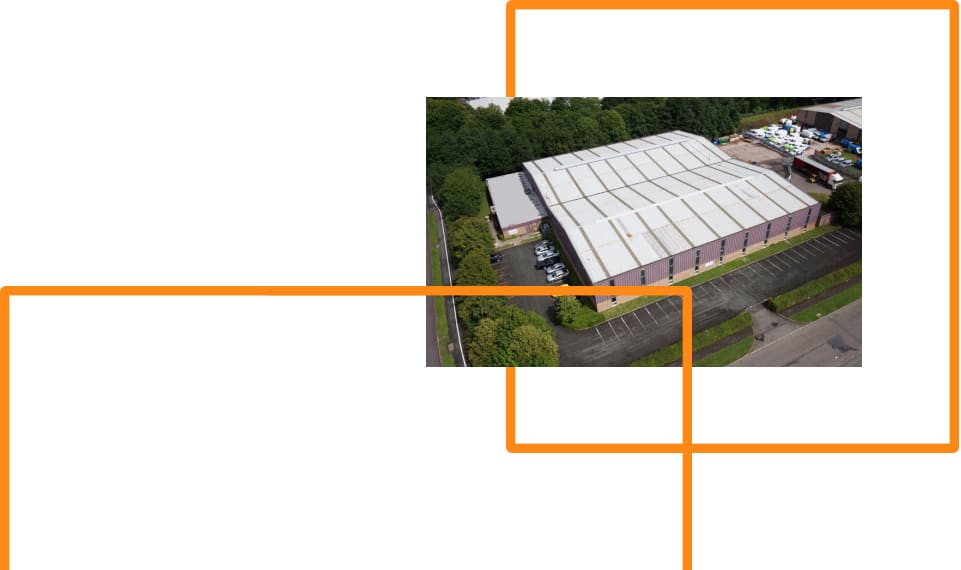
How can we help?
With over 17+ years of knowledge and experience, we’re confident we can offer a flexible solution beneficial to both parties, get in touch with us today.

